Practical Suggestions for Journalists Covering Catastrophes
The
term “primary trauma” applies to individuals who have had
first-hand experience of a catastrophic event. It would include
those who survived or witnessed a catastrophe as well as those who
have lost someone close to them. Telling their story to journalists
can be damaging to these individuals, or it can be therapeutic. The
journalist has a significant role in determining which of these it
will be.
A journalist, like a doctor, should uphold the principle: “First, do no harm.”
The biggest determining factor is whether the affected person is ready to talk, and feels some measure of control over the situation.
You should ask permission. You may ask a potential interview subject, “Would you like to tell me about it now?” If he or she says no, you should accept it. You may leave an opening for them to speak to you later. A person who is not ready will not be able to tell her story in a coherent way; the information will be fragmented.
If the person agrees to talk, give him a sense of the parameters of the interview. This includes the time frame. (“I’d like to talk to you a few minutes…” or “I’d like to ask you a few questions…”) If you need to move on after a bit, this will help the person accept it on without feeling abandoned. If the person is in a highly emotional state, begins to break down, and seems self-conscious, you may ask if he would like to move the interview to a more private place – even a lobby or a doorway.
If other journalists crowd in and you lose control of the interview, think about ways to alleviate any distress the interviewee is experiencing as a result. This may include offering the interviewee the option of terminating the interview. We are in the early stages of creating a journalistic culture that is respectful of these considerations. You cannot always control or influence the behavior of other journalists – but you can conduct yourself in a way that allows you to live with yourself and to serve as an example.
Your tone of voice and body language matter. A person experiencing trauma has a reversal of the emotional and the cognitive roles of the brain – the emotional areas gain influence, and the cognitive areas (those that logically process information) have a diminished role. A traumatized person will probably be slower to process language, and may ask you to repeat questions, or, in a detailed interview, even to write them down. She will forget much of what you say, but remember how you say it.
Show empathy, not detachment. But strive to maintain control of your own emotions. Empathy is not so much about joining a person in his emotions, as about appreciating and validating those emotions. Don’t expect any single reaction. Different people manifest trauma in different ways, ranging from the stoic and wooden to the hysterical. Do not judge the condition by the reaction.
Physical posture. Adopt a posture that shows empathy. If it is a long, seated interview, you may consider sitting beside the person. Some people find that it is helpful not to make eye contact, but to look at the same abstract spot on the floor or the wall that the interviewee is looking at, literally, “to see things from his perspective.” Leaning slightly forward expresses openness. Crossed arms and crossed legs can be interpreted as closed or hostile. Do not be surprised if you feel awkward or uncomfortable. This is natural.
Crying. If the interviewee cries, this is not necessarily a bad or harmful thing. As stated above, if he feels exposed or humiliated by being in a public setting, try to modify the setting and find privacy. You may proceed if the interviewee is willing.
Carry paper tissues at all times, and offer them as a caring gesture. One reason people feel self-conscious about crying is nasal discharge, and offering them a paper tissue can help. A friendly touch on the arm is also often good.
You may want to help them with a sense of purpose for the moment. It might help to say, “I know this is really traumatic for you to talk about, but people need to know about it because…” Do have a good reason at hand as to why people need to know.
Avoid stupid questions. First among these is “How does it feel?” Psychologists say that a less direct approach is sometimes better. “What do you want people to know about what happened?” Tread carefully. Don’t project. Do not say, “I know how you feel.” You don’t. Don’t say, “You must have felt…” You should be helping the person to articulate her own narrative, whatever it is, and by reflective listening, to legitimate it. Avoid pat responses. These include, “It could have been worse,” or “You’re lucky …” Respect silence. If they ask “Why did it happen?” do not try to give a direct answer. An appropriate response is an echo: “Yes, why did this terrible thing happen?” If they express denial, don’t challenge it. Denial is a legitimate and useful stage of the grieving process.
Ending the interview. Be supportive. End up with a warm handshake when possible, with thanks and comforting words, such as, “I wish you well.”
If it is a long, major interview, consider a follow-up call after a week or so, to say, “I just wanted to see how you’re doing.”
Sometimes people will feel violated or show anger, even if you haven’t done anything wrong. It can be their experience talking, not their reaction to you. Examine your conscience. If it is clear, move on.
-----------------------------------------------------------------------------------------------------------------------------------------
By Anne Nelson, Columbia Graduate School of Journalism and Dr. Daniel Nelson, M.D., University of Cincinnati School of Medicine. Anne Nelson has developed a curriculum in human rights reporting at Columbia. Dr. Daniel Nelson (her brother) is a child psychiatrist who led the Family Notification Unit at the Oklahoma City bombing.

Related Topics:

Freedom of Information, the Press and Civil Society
25 March 2010 || CCJD || Red Batario
________________________________________
16 October 2008 || CCJD || Red Batario
________________________________________
Corruption-Proofing the MDGs: Public Journalism Initiatives in Philippine Communities
17 July 2008 || CCJD || Red Batario
________________________________________
Media and War: A Tangled Relationship?
18 July 2007 || CCJD || Red Batario
________________________________________
Embedded Journalism:The Rights and Protection of Journalists Covering Armed Conflict
24 February 2007 || CCJD || Red Batario
________________________________________
Journalists Under Fire: Years of Living Dangerously, Again
26 May 2006 || CCJD || Red Batario
________________________________________
Media Governance, Media in Governance: Bad News, Good News
03 December 2004 || CCJD || Red Batario
________________________________________
Media’s Role in Conflict and Terrorism
12 December 2003 || CCJD || Red Batario
________________________________________
Bringing the News Back to Where it Belongs: The People
11 October 2002 || CCJD || Red Batario


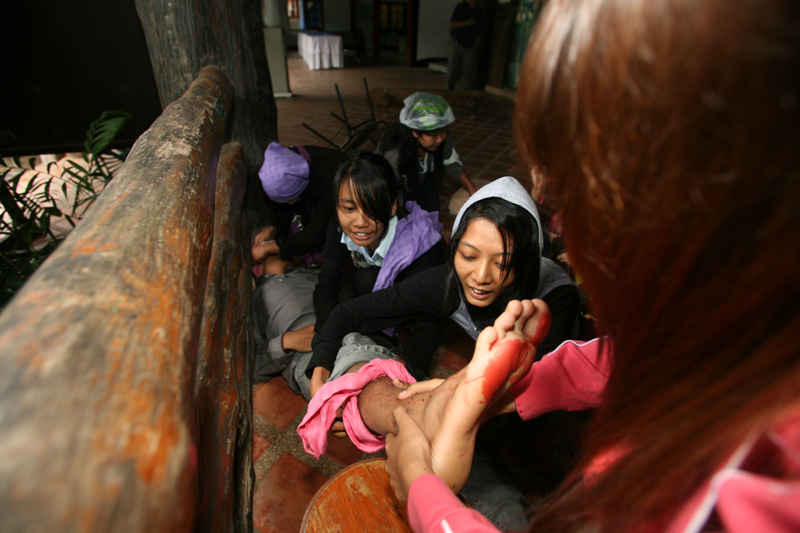
Young Burmese Journalists learn basic first aid and survival techniques
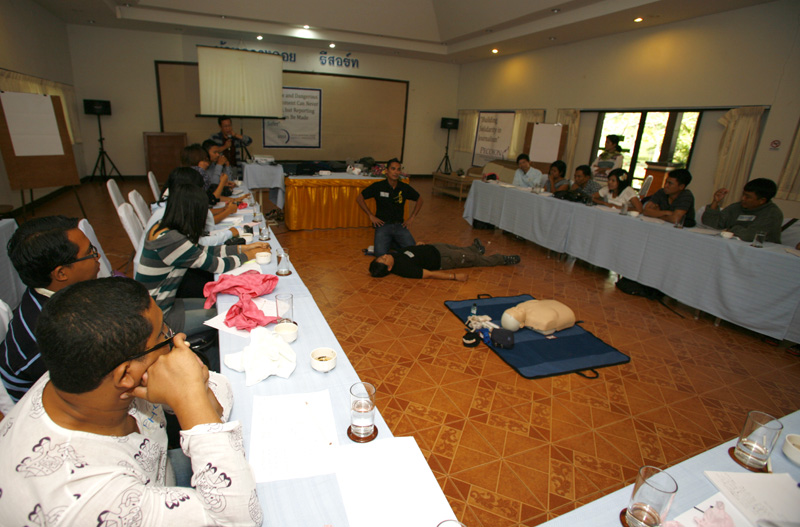
Burmese journalists watching basic life support demonstration prior to practical exercise.
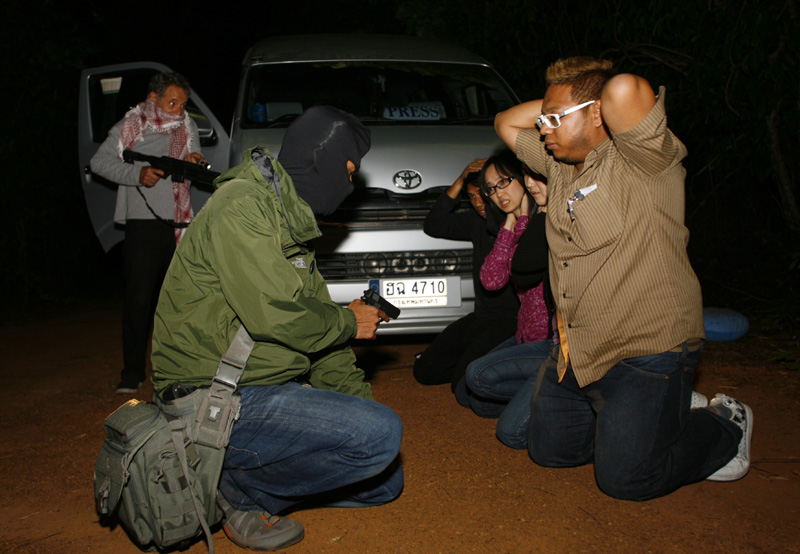
How to reach when threatened with guns and possible abduction.
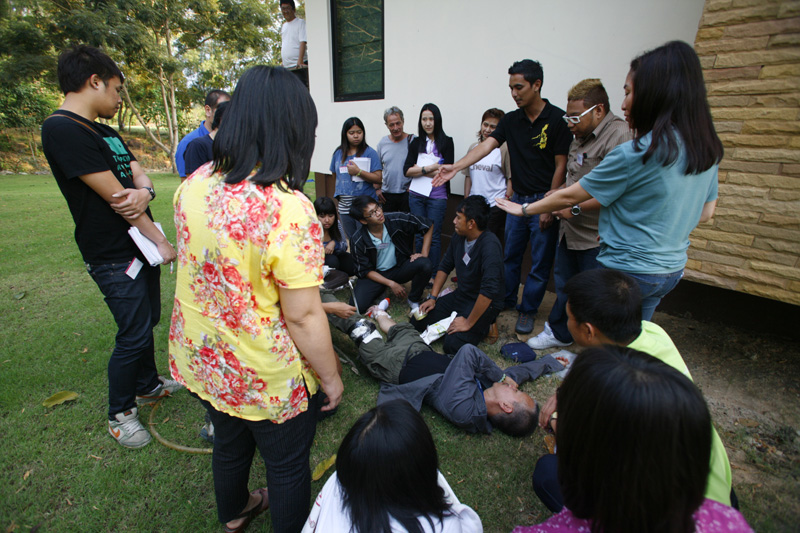
Field exercise on treating gunshot wounds prepares Thai journalists for the rigors of the training exercise.
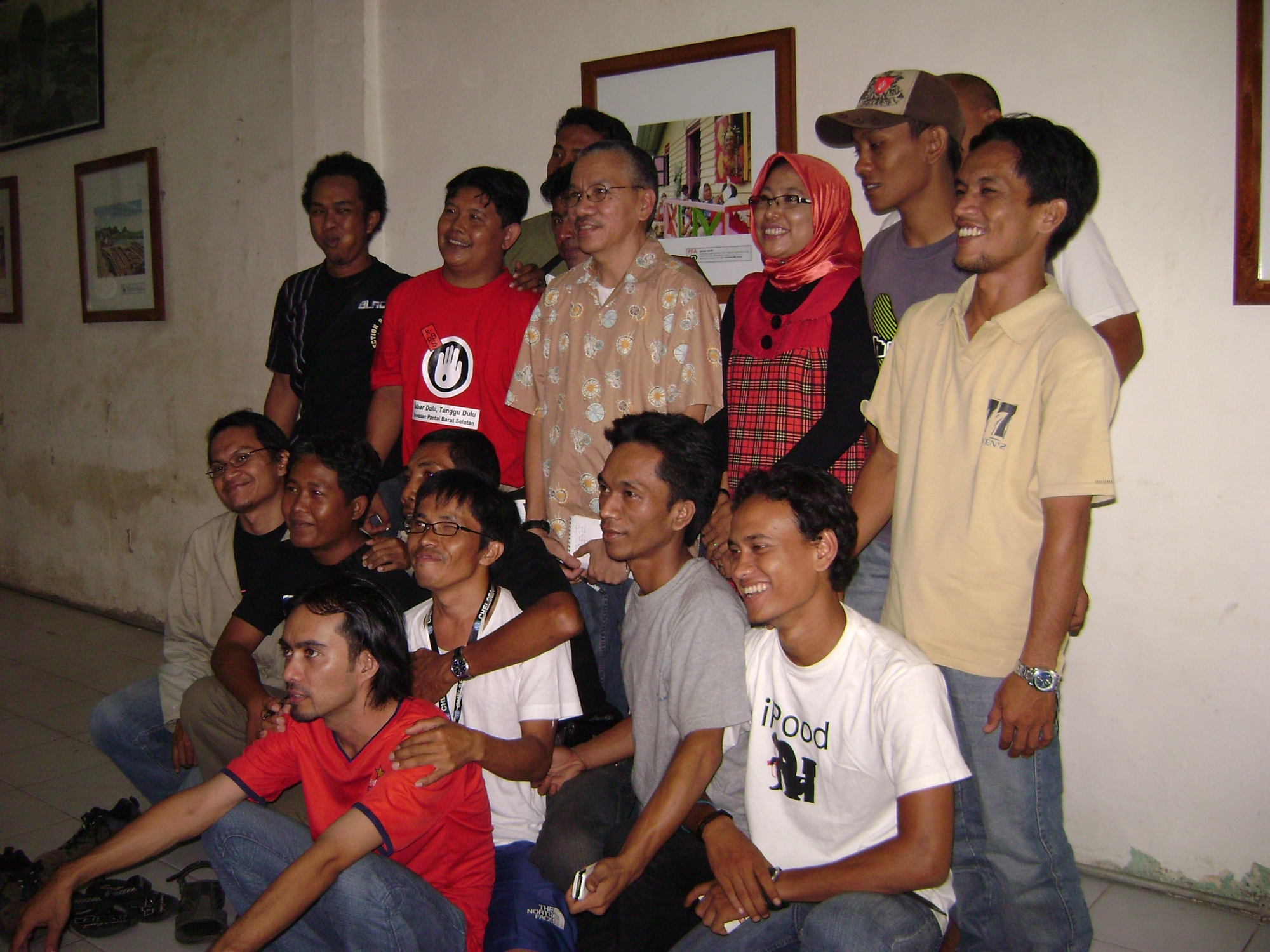
Post-Tsunami meeting wth Journalists in Banda Aceh, Indonesia
Governance, Democracy and Development
Peace and Conflict
Transparency and Accountability
Women and Children
Indigenous People
Center for Community Journalism and Development
4th Flr., FSS Building I, 89 Scout Castor,
Barangay Laging Handa, Quezon City
Philippines

All Right Reserved @ Center for Community Journalism and Development 2013